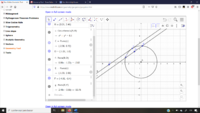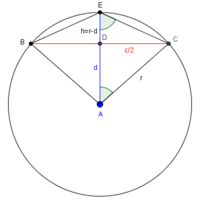Gorgiewave
New member
- Joined
- Nov 16, 2017
- Messages
- 13
Please see the attached sketch. CB is a chord. D is the midpoint of the line CB. The other line is a tangent to the circle that is parallel to the chord CB. I'm looking for a way to calculate the angle CEB. Can anyone explain how that could be done? I think if the chord was a diameter line, CEB would be 90º (π/2 rad) and if the chord were overlaid on the tangent, CEB would be 180º (π rad).




